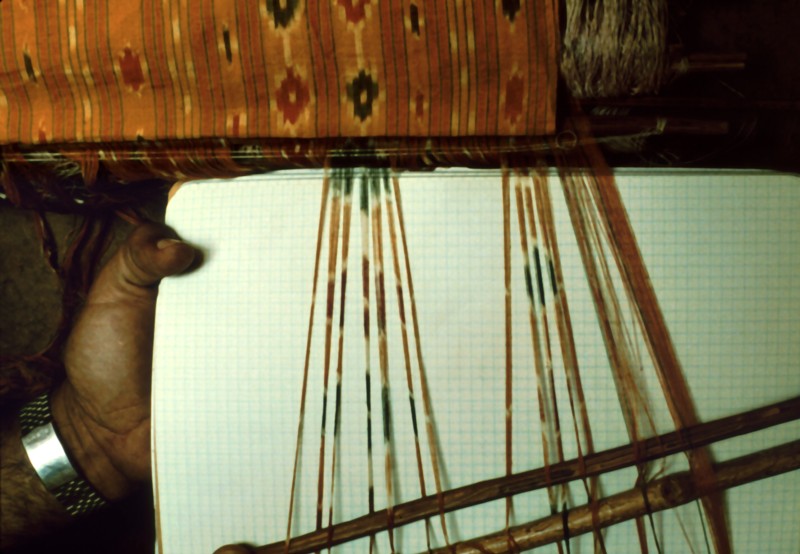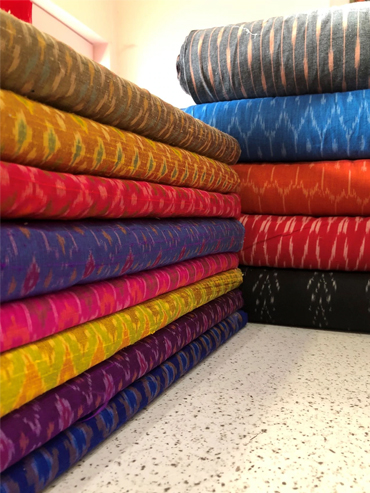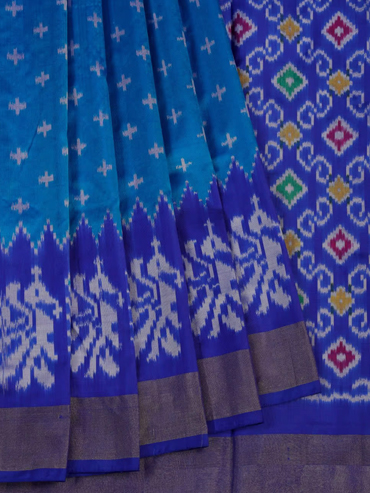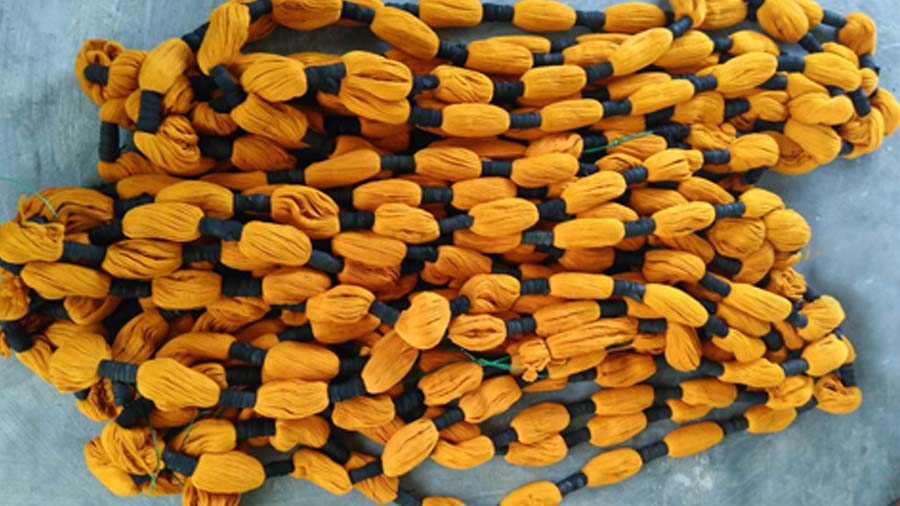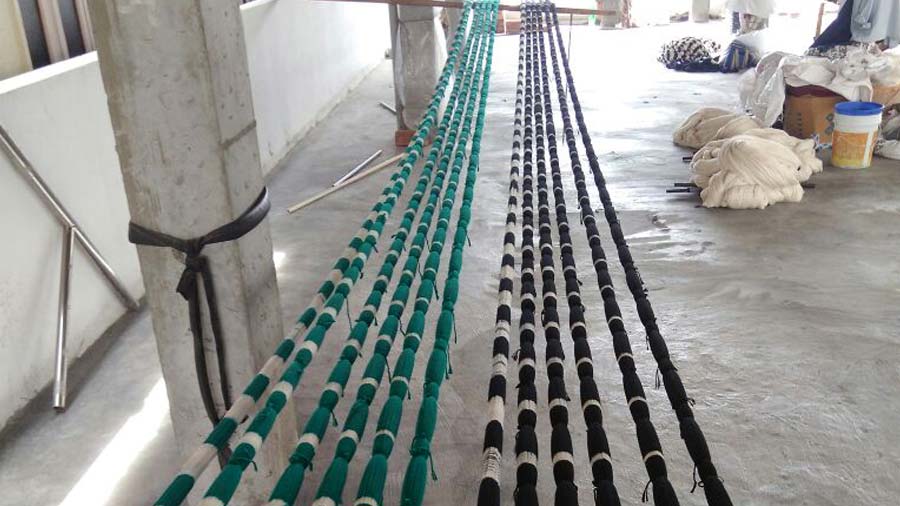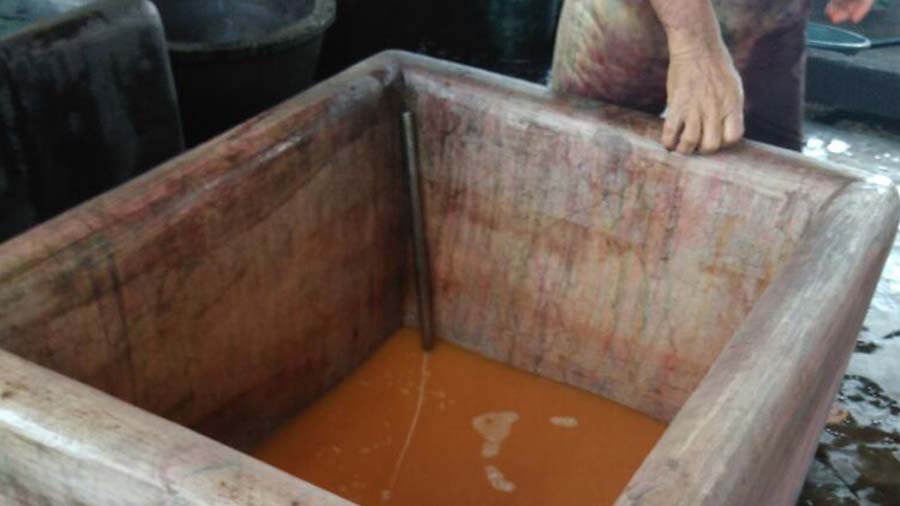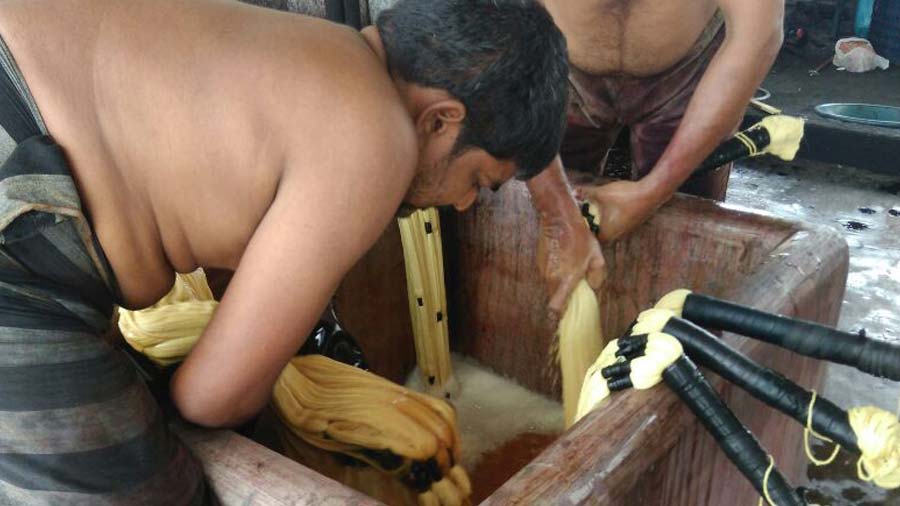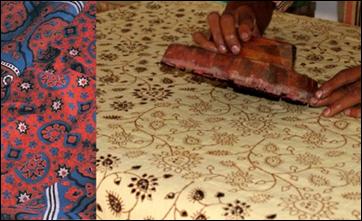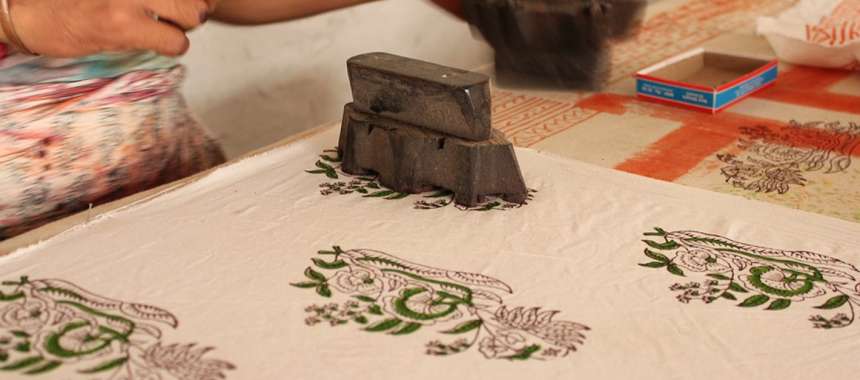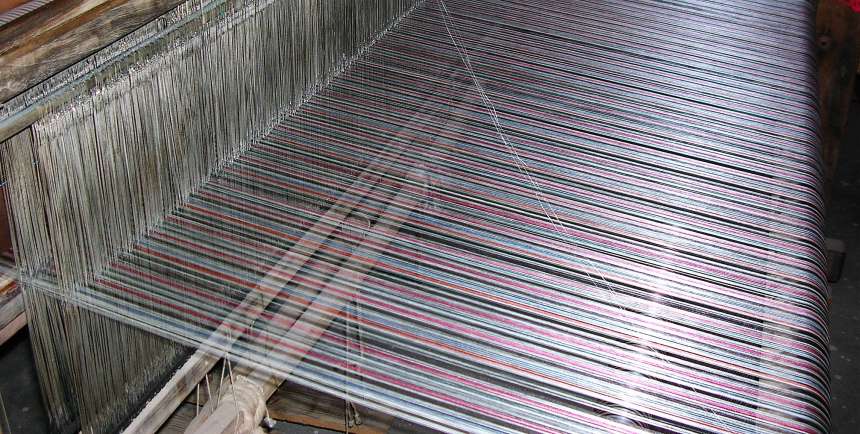Overview
The term ‘ikat’ stems from the Malay Indonesian expression mangikat meaning to bind, knot or wind around. Ikat, known as tie and dye textile design is known around the world. Kat has been used since centuries in India in Orissa, Gujarat and Andhra Pradesh. Each state has its own style of designs most popular being the geometrical patterns in heavy waves. In principle, ikat or resist dyeing involves the sequence of tying and dyeing sections of bundles of yarn to a predetermined colour scheme prior to weaving. The designs in various colours are formed on fabrics either by warp threads or weft threads (single ikat) or by both (double ikat). Andhra Pradesh is known for its double ikat ‘tie and dye’ style of weaving.

